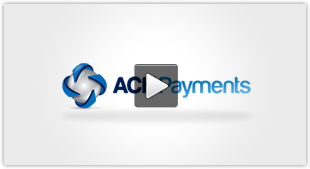Credit card transactions dominate the online payment space, but having the additional payment rail of ACH can be a huge advantage, especially for businesses and organizations who have recurring payments requirements. Here are a few things you will want to look for if you or your application need to accept both ACH and Credit Card Payments.
Single platform
 Having a single platform that is capable of processing both credit card transactions and ACH (eCheck) transactions can make life much more simple. First of all, there’s a single source for processing. This might mean a single API integration or it might mean a single virtual terminal for both payment rails. You’re either eliminating development time for what would be a second API integration or you’re eliminating user logins of what would be a second virtual terminal.
Having a single platform that is capable of processing both credit card transactions and ACH (eCheck) transactions can make life much more simple. First of all, there’s a single source for processing. This might mean a single API integration or it might mean a single virtual terminal for both payment rails. You’re either eliminating development time for what would be a second API integration or you’re eliminating user logins of what would be a second virtual terminal.
API notifications can allow you to programmatically manage failed transactions if the application is saving both credit card and ACH banking data. If a customers default payment method happens to be a credit card and it fails, assuming you are also storing ACH banking data your application can originate the Backup ACH transaction with no manual involvement. This can be especially helpful for subscription based transactions where credit card declines rates are much higher.
Pricing models
 On the ACH side of the equation, most all organizations and businesses will benefit from a flat rate pricing model for their ACH processing. In other words, a flat processing fee no matter the dollar amount of the transaction. One commonly seen model that is not of a flat rate variety is a discount fee model. This is where a percentage of the transaction amount calculates the processing fee for a given transaction. These model usually amount to 1 percent or slightly less. They can be advantageous for transactions that have a dollar amount of ~35 cents or less, but they become burdensome as the transaction dollar amounts get higher, above $35.
On the ACH side of the equation, most all organizations and businesses will benefit from a flat rate pricing model for their ACH processing. In other words, a flat processing fee no matter the dollar amount of the transaction. One commonly seen model that is not of a flat rate variety is a discount fee model. This is where a percentage of the transaction amount calculates the processing fee for a given transaction. These model usually amount to 1 percent or slightly less. They can be advantageous for transactions that have a dollar amount of ~35 cents or less, but they become burdensome as the transaction dollar amounts get higher, above $35.
On the credit card side, it’s usually best to opt for interchange plus pricing. Interchange plus provides you with transparent pricing for a given card type. That means that whatever card type is used, it determines the interchange bucket thay the transaction will fall into. Here’s more information on interchange plus pricing.
Security
 While ACH transactions are not subject to PCI requirements, if you’re integrating to a single platform that provides processing for both rails, you’re getting the added security of having both transaction types processed and maintained on a PCI level one compliant platform. Why risk your customer’s sensitive bank account date?
While ACH transactions are not subject to PCI requirements, if you’re integrating to a single platform that provides processing for both rails, you’re getting the added security of having both transaction types processed and maintained on a PCI level one compliant platform. Why risk your customer’s sensitive bank account date?
If your organization of business is in need of both credit card and ACH processing, hit us up. We’re here to listen to your needs and place you in the best possible position for both payment rails.








